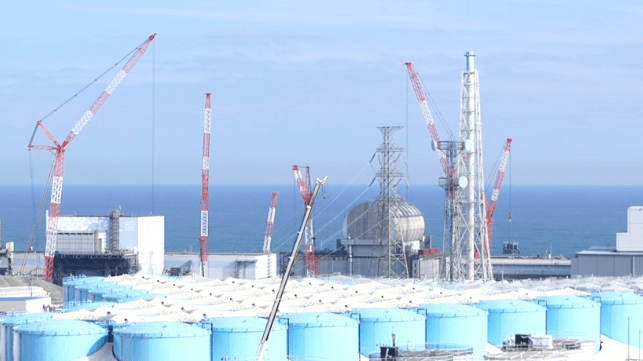Rockfish Caught off Fukushima Still Exceeds Radioactivity Limits

Radiation continues to plague local fisheries near Fukushima, Japan, a decade after a massive earthquake caused a meltdown at the Fukushima Daiichi nuclear power plant. On Tuesday, Japanese health officials said that they would halt all consignments of black rockfish from the region because testing in January found excessive levels of radioactivity.
It is not the first time: in February 2021, rockfish catches near Fukushima tested out with five times the permitted radiation level allowed by the Japanese government, registering 500 Becquerels of radioactive cesium per kilo. The fish were caught about four nm off the coast. By comparison, West Coast bluefin tuna test out at less than one Becquerel per kilo.
The landscape surrounding the plant was heavily contaminated with cesium from fallout from the reactor meltdown in 2011. While the Japanese government has remediated human-occupied areas by removing the topsoil, forests and rural areas have not been treated, according to researchers - leaving an abundant reserve of dangerous radioactive isotopes in the surface soil layer. This contamination washes down into streams when it rains, entering the food web.
Plans for additional discharge
Japanese response management officials at the Fukushima disaster site have long sought to start dumping radioactive cooling water into the sea. The plant is partially flooded, and about 150 tonnes of contaminated water is pumped out every day for storage in a massive tank farm. The strategy is not sustainable, officials say: there are already more than 1,000 large tanks on site, and the plant will eventually run out of room for water storage.
Instead, site managers want to release treated water into the ocean. The wastewater has been processed to remove everything except for radioactive tritium, an isotope of hydrogen found in elevated levels in irradiated water. It is virtually impossible to remove.
The site's managers have already begun construction of the infrastructure for discharging the water. The plan calls for a series of storage pits to hold the water temporarily, along with an undersea tunnel that would carry the flow about half a nautical mile offshore. Work on drilling the tunnel has been delayed until June amidst opposition to the project.
Tepco - the plant's operator - believes that releasing the water into the sea should be safe, as the contaminants would be heavily diluted and radioactivity in the area would quickly return to background levels. Local fishermen vehemently oppose the plan, as their livelihoods are already affected by radiation from the plant. "If you insist on the safety of treated water, why don't you spray it in your garden or dump it in a river flowing into Tokyo Bay?" fisherman Toru Takahashi told Asahi Shimbun.
